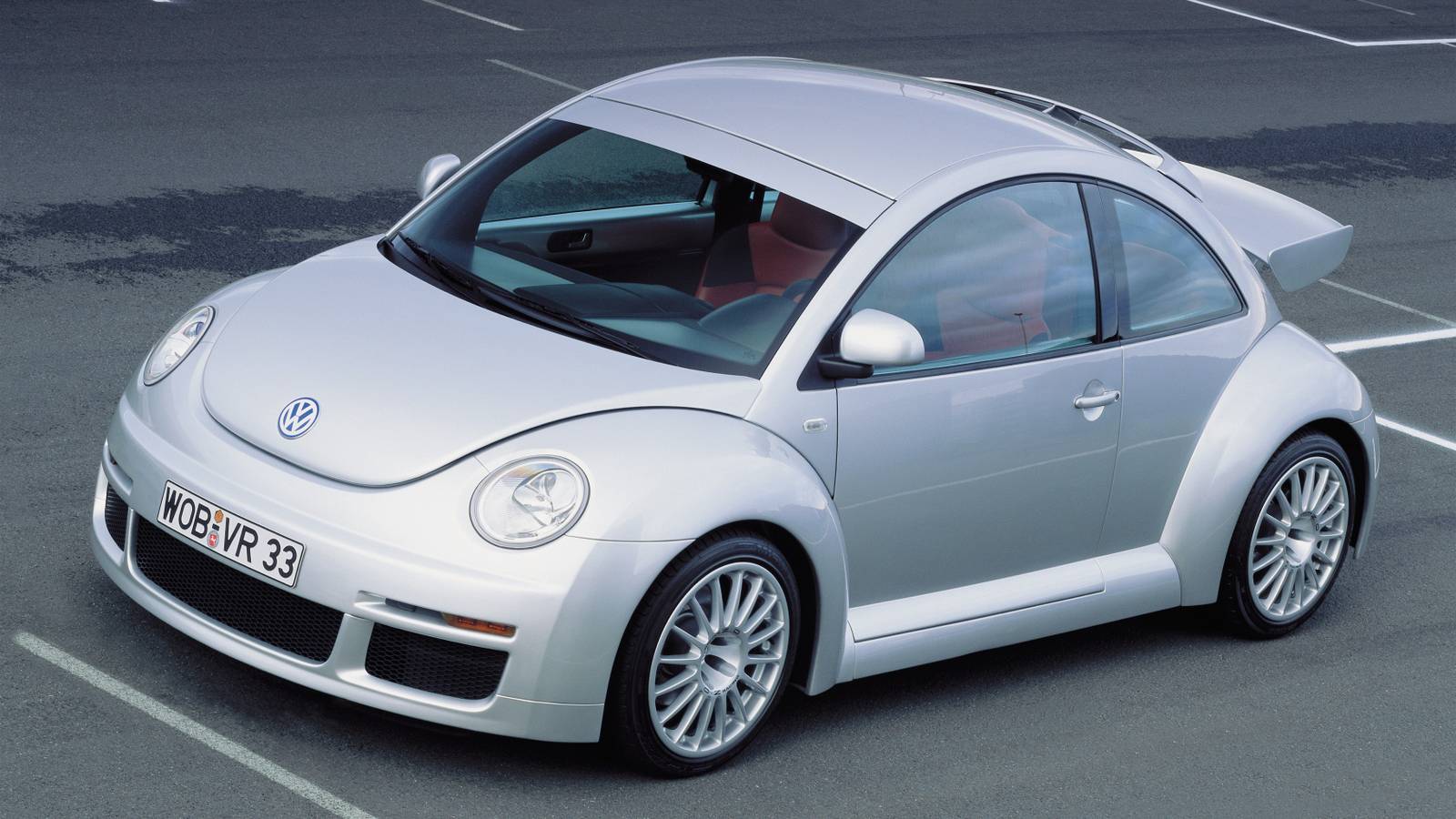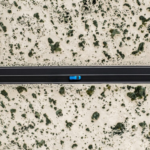The 25-year rule is a massive inconvenience for American gearheads. There are so many great cars that were made outside of the US that can’t be imported until they hit that marker and finally become bona fide classics. On the flip side, that means there are lots of interesting imports to look forward to every year, and 2026 will be no different.
We have compiled the following list as a reminder about the best and most interesting cars that become legal for import in 2026. These include everything from rare sedans to sports cars and hot hatches, and they’re guaranteed to turn heads once they hit American streets.
There aren’t many hot hatches that are as beloved as the Honda Civic Type R. While it’s now sold in America, it took a long time for that to happen. As a result, the USA missed out on the absolutely fantastic EP3 generation of the car. This is widely considered to be one of the best performance cars Honda has ever made, and it isn’t difficult to see why. The EP3 Civic Type R is powered by a 2-liter inline-4 with Honda’s VTEC variable valve timing system, producing 197 hp in European-spec versions and 212 hp in Japanese-spec versions. Combined with a 6-speed manual transmission and a weight of less than 2,700 lbs, this made the EP3 Civic Type R fast and fantastic to drive.
You’ll only be able to get the pre-facelift EP3s from next year – the arguably better-looking facelift model didn’t show up until 2004. But the pre-facelift is still brilliant, and like any high-performance Honda, there’s plenty of ability to tune it up to ridiculous levels!
Like the EP3 Honda Civic Type R, the DC5 Honda Integra Type R is beloved by enthusiasts and often thought of as one of Honda’s best performance cars ever. The DC5 Integra was sold in the US as the Acura RSX. But, America never got the Type R variant, and 2026 will be the first year Americans will be able to legally import one.
The Japanese-spec version of the DC5 Integra Type R uses the same 2-liter VTEC inline-4 as the Japanese-spec EP3 Civic Type R. That means an output of around 217 hp, and a fantastic 6-speed manual transmission. It’s also got the same level of tuneability as the EP3 Civic Type R, so you could really have fun with pushing the power into the stratosphere.
You may never have heard of the MG ZS180. This generation of MG Rover’s output is something that was only generally popular within Britain, and many people have chosen to act as if it never existed. But, there were some genuinely great sleeper cars among those cars, and the ZS180 is one of them. It’s powered by a 2.5-liter V6 developed in-house by MG Rover, producing 175 hp and 177 lb-ft of torque. This gave it a 0-60 time of 7.3 seconds and a top speed of 139 mph. While that may not sound impressive in the 2020s, that was genuinely great for an otherwise boring-looking British sedan in the early 2000s.
In the world of performance cars, there aren’t many that are better than homologation specials. The BMW M3 GTR Strassenversion is one that doesn’t get a lot of mentions. But, it is one of the coolest homologation specials out there, and that’s mainly because of the engine it has under the hood.
Instead of the regular E46 M3‘s 3-liter inline-6, the M3 GTR had a 4-liter V8 that was developed specifically for sports car racing. That was because BMW wanted to run the M3 GTR in the American Le Mans Series, and it felt that the regular straight six wouldn’t be powerful enough. Racing versions of the M3 GTR produced 444 hp. The road-legal Strassenversion was slightly detuned, producing 382 hp. That still gave it a top speed of 183 mph, making it a genuine supercar-slayer!
Even though it was designed to run in an American racing series, the M3 GTR Strassenversion was never sold in the US. But, from next year, you’ll finally be able to import one to America. You’ll be lucky to find one for sale, though, as only 3 production cars were ever made.
Judging by how crazy it is, you’d expect that the Renault Clio V6 was some kind of homologation special. It definitely does echo many of the characteristics of those mad Group B rally specials of the 1980s. But the Clio V6 never competed in any motorsports beyond a one-make series run by Renault itself. This car was mainly designed just to test the limits of how crazy the Clio platform could get.
As the name suggests, the Clio V6 was powered by a 3-liter V6 engine. In Phase 1 cars, this produced 227 hp. This engine was mid-mounted, slotting in where the rear seats would be in a standard Renault Clio. The engine also drove the rear wheels, instead of the front like in a regular Clio, through a 6-speed manual transmission. This led to a car that had a 0-60 time of 6.2 seconds and a top speed of 146 mph.
The Renault Avantime is definitely the odd one out in this list. Instead of being a sports car, hot hatch, or surprisingly fast sleeper, it’s a quirky minivan-sized 2-door grand tourer! The Avatime was based on the fourth-generation Renault Espace and was developed by Matra. Matra believed that Espace customers wanted something that felt and drove like an Espace even when their kids had grown up and left home. So, the idea came to develop the Espace platform into a luxurious, pillarless coupe with 4 seats.
Being based on the fourth-generation Espace, the Avantime shares some of its engine choices. Those were a 2-liter turbocharged inline-4 petrol, a 3-liter V6 petrol, and a 2.2-liter inline-4 diesel. It also shared the Espace’s 6-speed manual and 5-speed automatic transmission options.
The Avantime was a total commercial failure. Not only did it sell incredibly poorly, but it also ended up bankrupting Matra. It has lived on as a cult classic, though, thanks to enthusiasts who love these cars and keep them on the roads.
Unless you really know your stuff when it comes to JDM cars, you may never have heard of the Toyota Verossa. A larger version of the Toyota Altezza (known outside of Japan as the Lexus IS), the Verossa replaced the Chaser and Cresta in 2001. It didn’t fare as well in the Japanese market as its predecessors – it was discontinued in 2004 due to poor sales.
While its looks aren’t to everyone’s taste, its drivetrain definitely has a lot of enthusiast appeal to it. Certain models of the Verossa came with variants of the legendary 2.5-liter 1JZ inline-6. This included the 276 hp turbocharged 1JZ-GTE version! That gives the Verossa real sleeper credentials, being pretty powerful from the factory and having lots of tuning potential.
The Volkswagen New Beetle isn’t a car you would ever typically associate with performance. Most people just dismiss it as a kitch, retro-styled car from the 2000s that a true enthusiast wouldn’t go anywhere near. But, Volkswagen did make one absolutely crazy version of the New Beetle that nobody would have seen coming.
The Beetle RSI looks ridiculous at first glance, thanks to that wide body kit and extra rear spoilers. Under that ludicrous skin, though, is Volkswagen’s 3.2-liter VR6 engine. This engine produces 221 hp, with that power going to all four wheels through a 6-speed manual transmission.
Only 250 of these cars were ever made. That makes them incredibly rare and incredibly desirable. They were also never sold in the US, and next year is the first year you’ll be able to legally import them. If the idea of a crazy version of an otherwise kitchy car appeals to you, it might definitely be worth seeing if you can get hold of one!
Sources: BMW, Honda, MG, Renault, Toyota, Volkswagen
We want to hear from you! Share your opinions in the thread below and remember to keep it respectful.
Your comment has not been saved
This thread is open for discussion.
Be the first to post your thoughts.



















